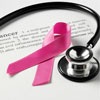
iStock
Worldwide, Tuberculosis (TB) is now the most common cause of
death among people with HIV. TB is caused by a bacterium called Mycobacterium tuberculosis.The most common symptom of TB in the lungs (often called pulmonary TB) is a persistent cough (longer than 2 weeks), which produces sputum (a
mucous substance that is secreted into the airways of the respiratory tract) that can also be bloody. Weight loss, chills
and fevers followed by sweats, fatigue, night sweats, difficulty in breathing and,
occasionally, pain in the chest are also common symptoms of TB. These symptoms
can appear very slowly and are similar to other illnesses seen in people with
HIV.
In HIV positive people
with very severe immune damage, TB can spread from the lungs into any part of
the body. Often TB affects the lymph nodes, causing them to swell.
Other places of TB infection include the gastro-intestinal tract (causing pain
and severe diarrhoea), the spine (causing numbness or tingling), the liver
(causing inflammation), or the brain. If TB infection affects the brain, people
might have symptoms of confusion, change in personality, seizures or difficulty
moving parts of the body.
There is some evidence to
suggest that having active TB leads to a fall in CD4 cell count and a rise in
viral load. This means the effect of HIV may be worse unless ART drugs are
given and the TB is treated.
People with HIV who
have had TB and been successfully treated are just as likely to benefit from
HIV treatment, experiencing the same fall in viral load and increase in CD4
cell count, as HIV positive people who have never had the disease, and living
just as long.
CD4 cell count and viral
load are the key indicators of the effect HIV is having on the immune system
and should be monitored regularly.
TB may be diagnosed using single or multiple
tests. These may include testing sputum samples, tuberculin skin test, chest
X-Ray or a blood test.
Treatment for TB can be as
challenging as treatment for HIV. There are some risks involved, mainly because
the treatments can cause other organ damage as well. Individuals with both HIV
and TB, need to be closely monitored by a healthcare provider for the side
effects from taking TB and HIV medicines together. In addition, there can be interactions
between some of the medicines used,
and it can also mean taking a lot of pills. This can be an issue for people who
have just been diagnosed with TB and HIV, those who have had HIV for sometime
before being diagnosed with TB, and people who are taking HIV treatment and
develop TB.
There are interactions
between some anti-retroviral (ART) drugs and TB medication. Types of HIV
treatment called protease inhibitors and non-nucleoside reverse transcriptase
inhibitors (NNRTIs) interact with rifampicin, a key drug included in many
anti-TB combinations.
Many doctors recommend
either delaying HIV treatment until the TB has been controlled, or even
stopping or changing ART medication if a person develops TB whilst taking it.
Treatment for HIV and TB can be very complex and it is best for the individual
to discuss the treatment best suited to their circumstances with their
healthcare provider.
If one has a low CD4
cell count, and starts ART drugs immediately after starting TB treatment, there
may be at risk of developing what is called immune reconstitution inflammatory syndrome
(IRIS). This is when the strengthening immune system is stimulated to attack TB
again. This can make one very unwell and cause unpleasant symptoms,
particularly fever and an enlargement of the lymph nodes.
The current
recommendation is that TB should be treated first if the CD4 cell count is
above 350. If the CD4 cell count is between 100 and 350, then the
recommendation is to start ART drugs two months after starting anti-TB drugs.
If one has a very weak immune system, with a CD4 cell count below 100, the
recommendation is to start treatment as soon as possible after starting TB
drugs, as the risk of side-effects, drug interactions, and immune
reconstitution syndrome are outweighed by the risk of further HIV-related
illness and even death if HIV treatment is delayed.
TB prophylaxis, is when
people with latent TB are sometimes given an anti-TB drug(s) to prevent the TB
becoming active. People who have been in close contact with people who
have TB may also be given an anti-TB drug to prevent them becoming
infected. The drug normally used is called isoniazid, which is given for at
least six months. Sometimes a combination of another drug, rifampicin, with
isoniazid can be given for four months.
Many people only find out that they have HIV
because they have been diagnosed with TB. It is important to remember that
currently there is very effective treatment for TB available, and people with
HIV who had their TB treated have gone on to lead long and healthy lives.
(Dr Avron Urison, Medical Director at AllLife Pty Ltd - providers of life insurance for HIV positive individuals.)




 Publications
Publications
 Partners
Partners














